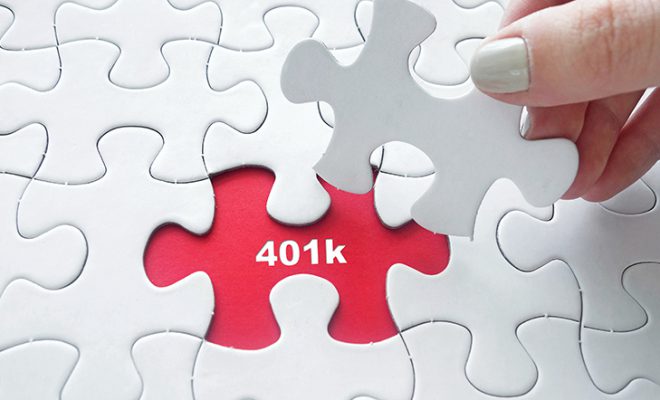Best Retirement Plans to consider for 2020

According to a recent survey, only 25% of people in the US have a financial plan. This means the percentage of people that have a retirement plan is even less than those with a financial plan. However, can you really afford to not plan for your retirement?
Moreover, with increasing healthcare expenses, increased lifespans, shrinking Social Security benefits, climate change risks looming large, inflation and market crisis, the need for retirement plans is critical. In such a scenario, it is best to plan for retirement and even more important to consider the various retirement plans carefully.
Table of Contents
5 best Retirement Plans to consider for 2020
- Pension Plans
- Profit-sharing Plans
- Defined Contribution Plans
- Simplified Employee Pension Plan
- Simple Individual Retirement Arrangement (IRA) Plan
1. Pension Plans
Pensions are defined benefit (DB) plans. Pension plans provide a fixed, guaranteed monthly income upon retirement. Most often these plans consist of the Social Security system, the contributions are made by the employer, or in some cases, both, the employer and the employee. Some pension plans are also provided through insurance companies. These plans provide a fixed monthly amount for life upon the employee’s retirement.
Advantages and drawbacks of pension plans
- As the benefits are provided until the death of a person, pension plans address the risk of running out of money. The employer and not the employee is responsible for the risks of investment and longevity.
- One of the drawbacks of pension plans is that the amount of pension is generally related to the salary and the number of years of service of the employee and hence, the employee cannot decide the pension amount. Moreover, a company’s financial portfolio could impact these plans.
2. Profit-sharing Plans
A study of 1500 working professionals in the US revealed that 72% of them prefer to work in an employee-owned company. What does that mean? Companies share benefits with employees in different ways – by offering cash profit, by offering discounted rates on the company stock for the employees to purchase or Employee Stock Ownership Plans (ESOP).
Pros and cons of Profi-sharing Plans for both, the employer and the employee:
- These plans can increase employee productivity and the company’s profits.
- Profit-sharing plans do not cost the employee anything. However, they are not guaranteed benefit plans, as the benefit depends on the performance of the company and is highly uncertain and unpredictable.
- The amount of contribution is at the discretion of the employer. There are no set laws regarding the contribution amount.
- These plans are a good option for companies that have cash flow issues.
- These plans may have higher administrative costs compared to other plans.
3. Defined Contribution Plans
Among the more common type of retirement plans, Defined Contribution Plans, are employer-sponsored plans. The employer provides each individual employee with an account. These plans include 401 (K) and Individual Retirement Accounts (IRA). In these plans, the employees make the contributions, most often through a system of direct payroll deduction offered by the employer.
Why are Defined Contribution Plans the most common and most preferred?
Defined Contribution Plans provide a number of benefits to the employees and the employers, and hence, are among the more ubiquitous plans:
- These plans are easy to set up and maintain, as the employer sets them up for the employees.
- Most often employers offer a direct payroll deduction.
- Employees can avail tax benefits.
- These plans have a higher contribution limit compared to other plans.
- Employees have control over the investment.
However, these plans can have certain drawbacks. At times, the maintenance and administrative fees for these plans could be high. New employees might have to wait for a certain number of years to start contributing to these plans.
4. Simplified Employee Pension Plan
In a Simplified Employee Pension (SEP) Plan, the employers contribute to IRAs set up for their employees. Any business – small, large or self-employed professionals – can set up SEP Plans. The employer can set aside up to 25 % of each employee’s and his/her own pay into individual accounts.
Key features of Simplified Employee Pension Plan:
- It is easy to set up this plan.
- It has low administrative costs.
- It allows flexibility in the contribution amount depending on the revenue and profits of the company.
- It is beneficial for businesses in which cash flow is a concern.
- Only the employer contributes to this plan.
- There is a limitation on the amount of contribution.
- The employee always has ownership of the amount collected in the SEP plan.
5. Simple Individual Retirement Arrangement (IRA) Plan
A Simple IRA Plan allows employers and employees to contribute to the account set up for the employee. It is among the most common and preferred plans for retirement. This plan is available to small businesses with 100 or fewer employees. The contributions are made by the employers. However, employees could choose to contribute, too.
Key features of Simple Individual Retirement Arrangement (IRA) Plan:
- It is easy to set up a Simple IRA Plan and is cost-effective.
- The employer contributes to the account. Employees could choose to contribute, too.
- The contributions are fixed.
To sum it up
Planning your retirement entails more than just choosing a plan. It involves calculating the right amount for retirement, the amount of monthly or yearly contributions, the tax filing requirements, tax benefits, and administrative costs and fees of each of the retirement plans that you are considering. Do you want help and guidance in planning your retirement and choosing the most suitable retirement plan aligned to your needs? Approach financial advisors today!

















